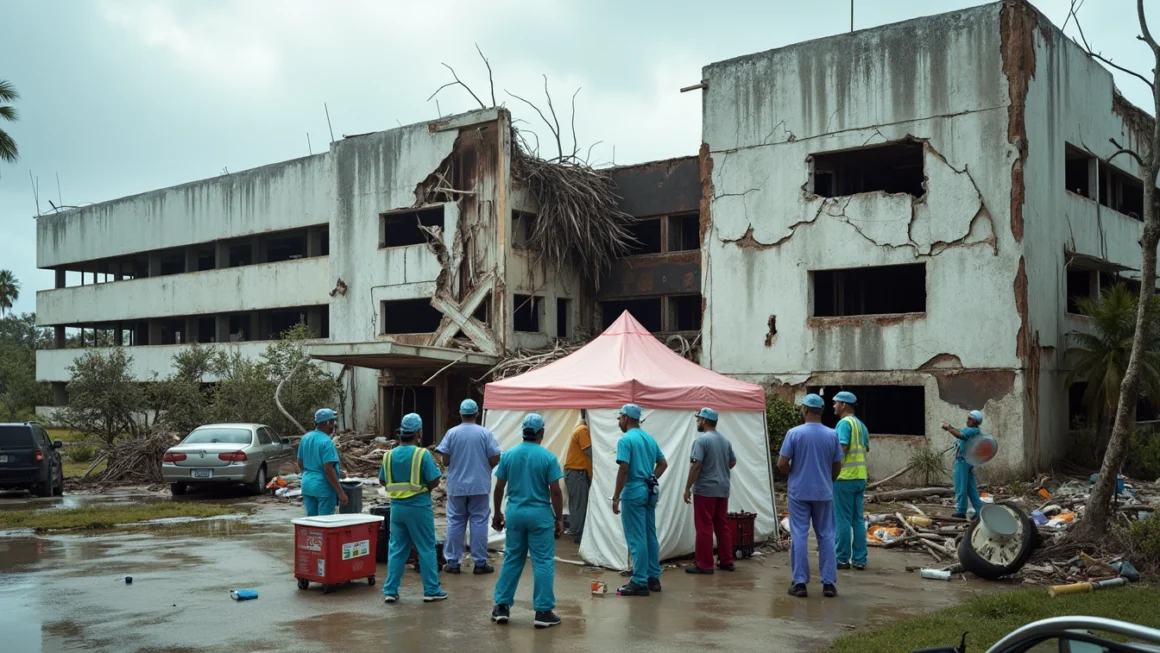Understanding the Impact of Hurricane Helene on Health Care Systems
Table of Contents
The recent devastation caused by Hurricane Helene has brought significant challenges to the healthcare systems in affected regions. As communities grapple with the aftermath, it is essential to acknowledge the comprehensive efforts necessary to ensure a resilient health infrastructure. What are the main considerations for healthcare leaders and stakeholders during such emergencies?
Effects of Hurricane Helene on Healthcare Facilities
Hurricane Helene has disrupted numerous healthcare facilities, leaving them vulnerable to operational challenges. Here are the key impacts:
- Infrastructure Damage: Many hospitals and clinics have suffered structural damage, resulting in temporary closures or limited operations.
- Resource Shortages: The storm has caused disruptions in the supply of critical medical resources, including medications and equipment.
- Telecommunication Disruptions: Communication networks in various regions are compromised, impacting coordination efforts.
Ensuring Continuity of Care
To mitigate the impact of these disruptions, healthcare leaders must swiftly implement strategies to maintain continuity of care:
- Establishing Communication Channels: Setting up reliable communication systems to coordinate between emergency services, healthcare facilities, and government agencies is crucial.
- Resource Allocation: Efficient redistribution of medical supplies and personnel can help sustain healthcare operations in the affected areas.
- Telehealth Utilization: Expanding telehealth services to provide remote consultations for non-emergency cases can alleviate pressure on local facilities.
Collaborative Efforts in Disaster Response
Effective disaster response requires collaboration among various stakeholders. How can these partnerships enhance recovery efforts?
Federal and State-Level Support
Federal and state governments play a pivotal role in disaster management by providing:
- Emergency Funding: Allocation of funds to facilitate rapid response and recovery operations.
- Logistical Support: Deployment of resources and personnel to assist local healthcare providers in restoring services.
- Policy Guidance: Issuing directives that streamline disaster response protocols and ensure compliance with safety standards.
The Role of Non-Governmental Organizations
Non-governmental organizations (NGOs) contribute significantly by:
- Providing On-ground Assistance: Mobilizing volunteers and healthcare professionals to offer immediate care to affected communities.
- Resource Distribution: Facilitating the supply of essential goods such as food, water, and medical supplies.
- Long-term Rehabilitation: Implementing programs aimed at rebuilding and enhancing healthcare infrastructure resilience against future disasters.
Building Resilient Healthcare Systems
As climate change continues to fuel severe weather events, it is imperative to focus on building resilient healthcare systems. What measures can prevent future calamities from crippling the healthcare sector?
Strengthening Infrastructure
Investing in modern and robust infrastructure that can withstand extreme weather conditions is essential. Upgrading facilities and incorporating sustainable designs will enhance their durability and efficiency.
Enhanced Training Programs
Regular training sessions for healthcare professionals on disaster management and emergency response can ensure preparedness in critical scenarios.
Community Engagement
Empowering communities with knowledge and resources to prepare and respond effectively to emergencies can significantly mitigate adverse impacts.
In conclusion, the aftermath of Hurricane Helene underscores the complex challenges faced by healthcare systems during natural disasters. By fostering collaboration among federal agencies, state authorities, NGOs, and communities, the resilience of health systems can be significantly enhanced. Encouraging a continuous dialogue on disaster preparedness is crucial. Stakeholders must remain committed to developing agile strategies that can adapt to evolving threats, ensuring that healthcare services remain accessible to those in need.
For those interested in technology that supports disaster recovery, exploring innovative software solutions can be beneficial.
For more about software solutions that aid in such situations, visit this website for insights.




